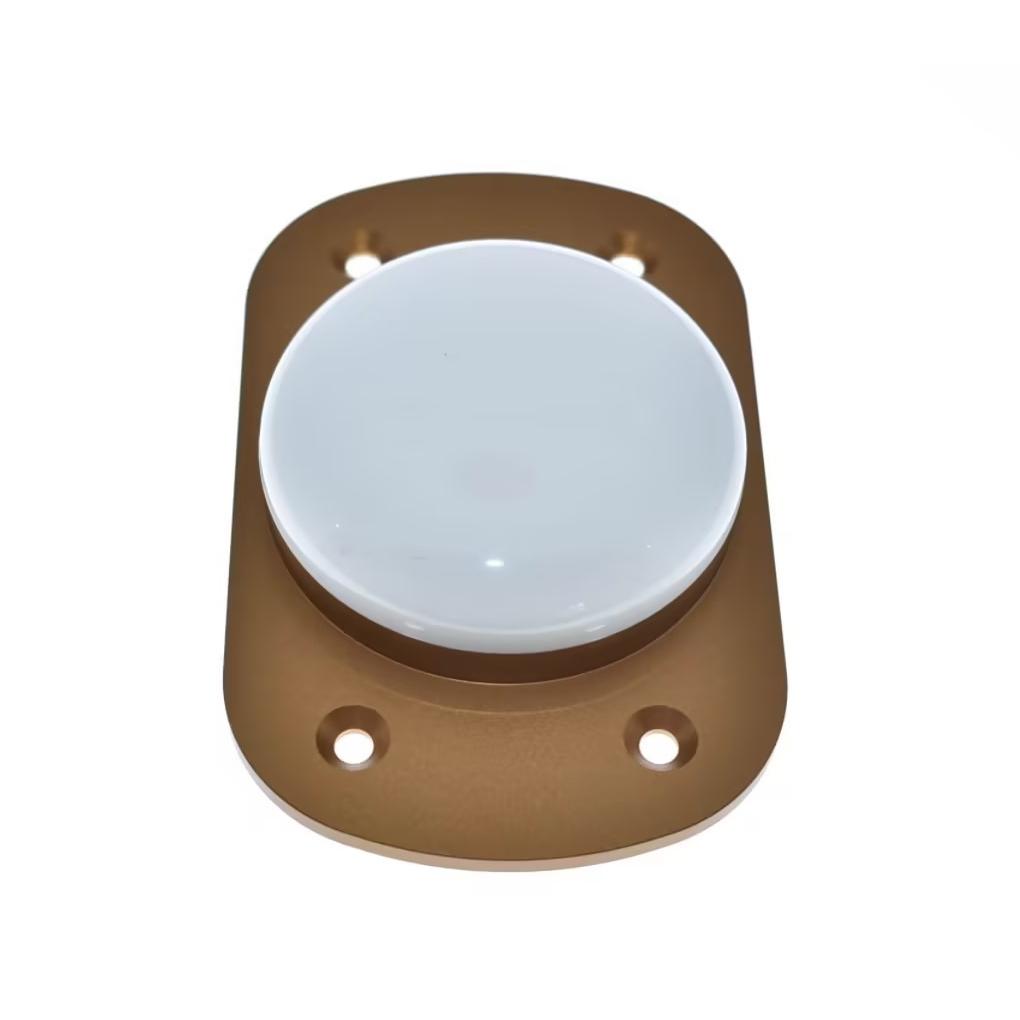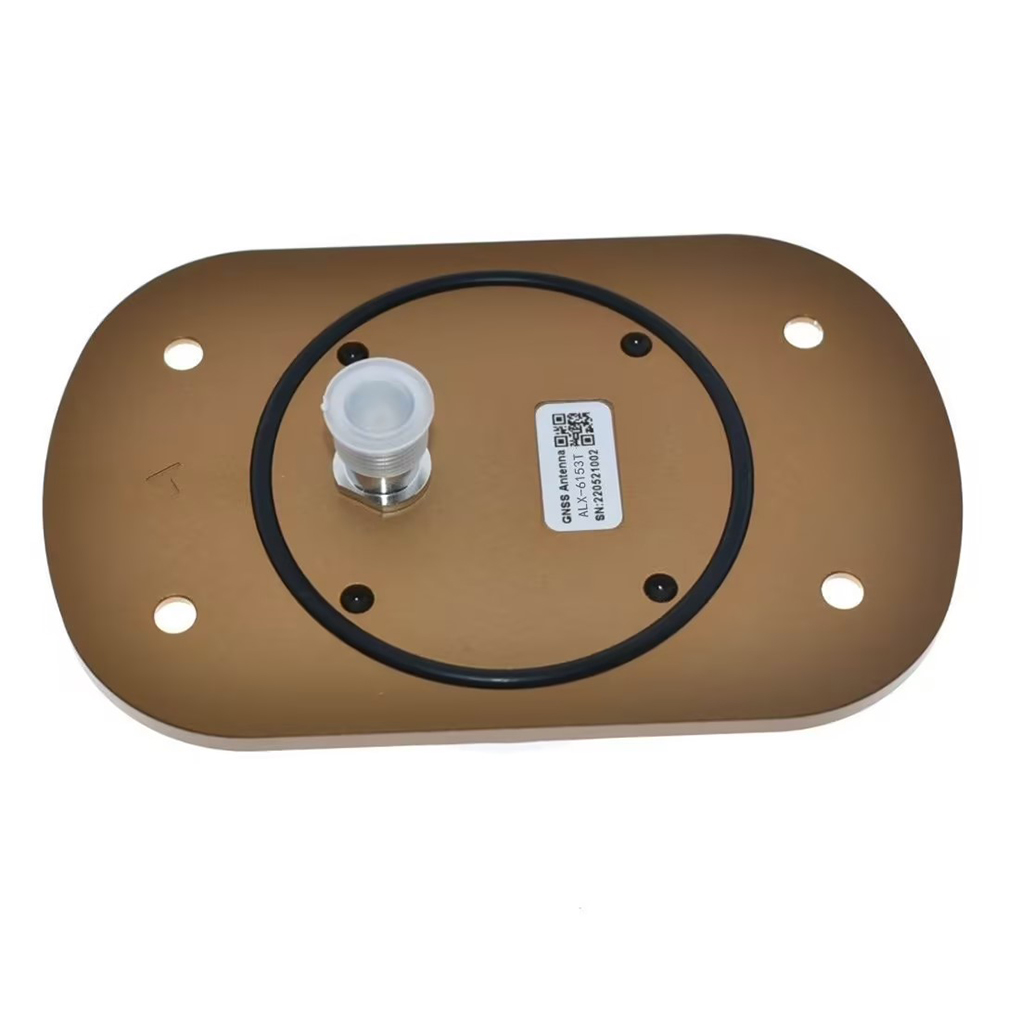Overview
RTK technology, when integrated into aviation antennas, addresses these limitations by leveraging correction data from reference stations. These reference stations, strategically placed on the ground at known locations, continuously monitor GNSS signals from constellations such as GPS, GLONASS, Galileo, and BeiDou. They calculate the discrepancies between the actual satellite positions and the positions indicated by the received signals, which can be affected by factors like atmospheric delays, satellite clock inaccuracies, and orbital perturbations. The correction data is then transmitted in real - time to the aircraft's RTK receiver via communication links, such as radio modems, cellular networks, or satellite communication channels.
RTK aviation antennas are designed to efficiently receive both the GNSS signals from satellites and the correction data from reference stations. By combining these two sources of information, they enable aircraft to achieve centimeter - level or even millimeter - level positioning accuracy. This level of precision is invaluable in aviation, where even the slightest deviation in position can have significant consequences. For example, during instrument - based approach and landing procedures in adverse weather conditions, RTK - enabled antennas provide pilots with highly accurate position information, reducing the risk of accidents and enhancing overall flight safety.
Moreover, as the aviation industry continues to evolve towards more autonomous and efficient operations, the demand for accurate and reliable positioning systems is on the rise. RTK aviation antennas play a crucial role in enabling advanced features such as automatic dependent surveillance - broadcast (ADS - B), precision runway monitoring, and unmanned aerial vehicle (UAV) operations in aviation - related tasks. They also support emerging applications like urban air mobility, where precise positioning is essential for the safe and efficient operation of air taxis and other small - scale aircraft in congested urban airspace. In essence, RTK aviation antennas are at the forefront of driving innovation and enhancing safety and efficiency in the aviation industry.
Design and Construction
The design and construction of RTK aviation antennas are complex endeavors that require a deep understanding of aviation requirements, electromagnetic theory, and signal processing techniques. Every aspect of the antenna, from its physical structure to the integration of components, is carefully engineered to meet the stringent demands of the aviation environment.
Antenna Element Design
The antenna element is the core component responsible for capturing GNSS signals from satellites and correction data from reference stations. For RTK aviation antennas, microstrip antenna designs are commonly employed due to their low - profile nature, which is essential for minimizing aerodynamic drag and interference with the aircraft's structure. A microstrip antenna typically consists of a metallic patch, usually made of copper or gold, placed on a dielectric substrate with a ground plane beneath.
To operate effectively across multiple GNSS frequency bands, such as the L1 (1.575 GHz), L2 (1.227 GHz), and L5 (1.176 GHz) bands for GPS, as well as the frequencies used for receiving correction data, the design of the metallic patch is optimized using advanced electromagnetic simulation software. The shape, size, and configuration of the patch are adjusted to achieve the desired impedance matching, radiation pattern, and gain for each frequency band. This often involves the use of complex geometries, such as fractal patterns or multi - layer structures, to ensure efficient signal reception and transmission.
The choice of dielectric substrate is critical for the performance of the antenna element. Substrates with stable electrical properties over a wide range of temperatures, humidity levels, and frequencies are preferred. Ceramic - based substrates are popular due to their high dielectric constant, which enables miniaturization, and their excellent thermal and mechanical stability. However, in some cases, lightweight and flexible substrates may be used to conform to the curved surfaces of aircraft, such as the fuselage or wingtips.
RTK Component Integration
Integrating RTK functionality into aviation antennas requires the incorporation of several key components. The receiver module is a crucial part, designed to receive both the GNSS signals from satellites and the correction data from reference stations. This module must be highly sensitive to pick up weak signals and accurately decode the information. It then passes the data to the signal processing unit within the antenna.
The signal processing unit plays a vital role in combining the raw GNSS signals with the correction data. Using complex algorithms, it adjusts the raw measurements to account for errors caused by atmospheric conditions, satellite clock inaccuracies, and other factors. This process is essential for achieving the high - precision positioning that RTK technology is known for. To ensure reliable operation, the RTK components need to be carefully shielded from electromagnetic interference (EMI), which is prevalent in the aviation environment due to the presence of numerous electrical systems on the aircraft. Shielding materials such as metal enclosures or conductive coatings are used to isolate the sensitive components from EMI sources.
Enclosure and Mounting Design
The enclosure of an RTK aviation antenna is designed to protect the internal components from the harsh aviation environment, which includes extreme temperatures, high - speed airflow, vibrations, and moisture. High - strength and lightweight materials, such as carbon fiber composites or titanium alloys, are commonly used for the enclosure. Carbon fiber composites offer excellent strength - to - weight ratio, reducing the overall weight of the antenna without sacrificing durability, while titanium alloys provide high corrosion resistance and mechanical strength.
The mounting design of the antenna is carefully considered to ensure stable operation during flight. Antennas are typically mounted on the aircraft's exterior, such as the fuselage, wingtips, or tail. The mounting location is selected to optimize signal reception, taking into account factors such as the aircraft's shape, the location of other antennas and electrical systems, and potential signal obstructions. Specialized mounts are used to securely attach the antenna to the aircraft, and they are designed to withstand the aerodynamic forces and vibrations experienced during flight. In some cases, the antenna may be integrated into the aircraft's structure, such as being embedded within the fairing or radome, to further reduce drag and improve aerodynamics.
Working Principles
The operation of RTK aviation antennas involves a series of coordinated processes that enable the antenna to receive signals, process data, and provide accurate positioning information to the aircraft's navigation systems.
Signal Reception
The process begins with the antenna element capturing the weak radio - frequency signals transmitted by GNSS satellites. These signals, which carry information about the satellite's position and time, travel through the Earth's atmosphere before reaching the antenna. The antenna element, designed to resonate at the GNSS frequencies, efficiently couples with the incoming signals and converts the electromagnetic energy into electrical signals.
Simultaneously, the antenna's receiver module is actively listening for correction data from reference stations. These correction signals are transmitted over various communication channels, and the receiver module must be able to distinguish them from other signals and accurately decode the data. Once received, the correction data contains information about the errors in the satellite signals, such as ionospheric delays, tropospheric delays, and satellite clock inaccuracies.
Signal Processing
The weak electrical signals received from the GNSS satellites and the correction data are then processed by the signal processing unit within the antenna. First, the GNSS signals pass through a low - noise amplifier (LNA), which boosts the signal strength while minimizing the addition of noise. The LNA is carefully selected for its high gain, low noise figure, and wide bandwidth to ensure effective amplification across the GNSS frequency bands.
After amplification, the GNSS signals pass through a series of filters. Band - pass filters are used to isolate the frequencies within the desired GNSS bands, rejecting unwanted frequencies and interference from other radio - frequency sources. The correction data is also processed to extract the relevant error - correction information. The signal processing unit then combines the raw GNSS signals with the correction data using complex algorithms. These algorithms adjust the raw measurements of the satellite signals based on the correction information, effectively compensating for the errors and improving the accuracy of the positioning data.
Position Calculation
With the corrected GNSS signals, the aircraft's navigation system uses the principle of trilateration or multilateration to calculate its precise location. Trilateration involves measuring the distance from the aircraft to at least three satellites. By knowing the positions of these satellites (which are transmitted in the GNSS signals) and the corrected distances to them, the navigation system can determine the aircraft's location in three - dimensional space (latitude, longitude, and altitude).
In the case of multilateration, more than three satellites are used, which can further enhance the accuracy and reliability of the positioning calculation. The high - precision positioning information provided by the RTK aviation antenna is then used by various aircraft systems, such as the flight management system (FMS), autopilot, and ADS - B equipment. This information enables the aircraft to navigate accurately, follow precise flight paths, and communicate its position to air traffic control and other aircraft, ensuring safe and efficient flight operations.
Advantages and Challenges
-
Advantages
One of the most significant advantages of RTK aviation antennas is their exceptional positioning accuracy. The ability to achieve centimeter - level or even millimeter - level accuracy is a game - changer in aviation. During approach and landing procedures, especially in low - visibility conditions, this high - precision positioning allows aircraft to follow instrument - based approaches more accurately, reducing the risk of runway incursions and improving the safety margin. It also enables more efficient use of airport resources, as aircraft can land and take off more closely spaced, increasing airport capacity.
RTK aviation antennas enhance the reliability of positioning systems. By using correction data from multiple reference stations, they can mitigate the effects of signal disruptions caused by factors such as ionospheric disturbances, satellite outages, and multipath interference. In areas where GNSS signals may be weak or unreliable, the RTK technology ensures that the aircraft can still maintain accurate positioning, providing a backup and redundant solution for navigation.
These antennas also support the development of advanced aviation applications. For example, in unmanned aerial vehicle (UAV) operations, RTK - enabled antennas enable precise flight control and navigation, allowing UAVs to perform tasks such as aerial surveying, inspection of infrastructure, and delivery services with high accuracy. In the emerging field of urban air mobility, RTK aviation antennas are essential for the safe and efficient operation of air taxis and other small - scale aircraft in urban environments, where precise positioning is critical for avoiding obstacles and ensuring safe separation from other aircraft.
Challenges
Despite their numerous advantages, RTK aviation antennas face several challenges. One of the primary challenges is the cost. The design, development, and integration of RTK technology into aviation antennas require significant investment in research, advanced materials, and specialized components. The need for high - performance receiver modules, signal processing units, and reliable communication links for receiving correction data contributes to the high production cost. This cost can be a barrier for some aircraft operators, especially those with smaller fleets or limited budgets.
Another challenge is related to the complexity of the system. Integrating RTK functionality into aviation antennas requires careful calibration and configuration. The aircraft's navigation systems and communication infrastructure need to be compatible with the RTK setup. Any misconfiguration or incompatibility can lead to errors in positioning and communication, potentially compromising flight safety. Additionally, maintaining and troubleshooting the RTK system requires specialized technical expertise, which may not be readily available in all aviation organizations.
Interference management is also a significant challenge in the aviation environment. The presence of numerous electrical systems on the aircraft, as well as external sources of electromagnetic interference, such as nearby communication towers and radar installations, can disrupt the operation of RTK aviation antennas. Developing effective shielding and filtering techniques to mitigate the impact of interference without adding excessive weight or complexity to the antenna design is an ongoing challenge for engineers.
Applications and Future Trends
-
Applications
RTK aviation antennas have a wide range of applications in the aviation industry. In commercial aviation, they are used for approach and landing procedures, especially in airports with challenging terrain or in adverse weather conditions. Airlines can use RTK - enabled antennas to improve the accuracy of their flight operations, reducing the number of missed approaches and improving on - time performance. They also support the implementation of advanced air traffic management systems, enabling more efficient routing and separation of aircraft, which can lead to reduced fuel consumption and emissions.
In general aviation, RTK aviation antennas are valuable for pilots flying in remote areas or conducting aerial surveying and mapping missions. The high - precision positioning provided by these antennas allows for more accurate mapping of terrain, infrastructure, and natural resources. They also enhance the safety of general aviation operations, especially in areas where traditional navigation aids may be limited or unreliable.
For military aviation, RTK technology offers enhanced navigation capabilities for combat and reconnaissance missions. The ability to achieve precise positioning in all weather conditions and in the presence of enemy jamming or interference is crucial for military aircraft. RTK aviation antennas enable military forces to conduct more accurate targeting, navigation, and mission planning, giving them a strategic advantage in the battlefield.
Future Trends
Looking ahead, several future trends are expected to shape the development of RTK aviation antennas. One trend is the further integration of multiple GNSS constellations and frequency bands. As more GNSS constellations become fully operational, such as Galileo and BeiDou, RTK aviation antennas will be designed to leverage signals from all available constellations. This will increase the availability and accuracy of positioning information, as well as provide greater resilience against signal disruptions.
The integration of artificial intelligence (AI) and machine learning (ML) algorithms with RTK aviation antennas is an emerging trend. AI and ML can be used to optimize the performance of the antennas in real - time. These algorithms can analyze the received signals, detect changes in the signal environment, and adjust the antenna's operation parameters, such as gain, filtering, and interference mitigation, to adapt to different conditions. For example, AI can be used to predict and mitigate the effects of ionospheric disturbances or multipath interference by analyzing historical data and current signal patterns.
Advancements in communication technologies, such as 5G and the Internet of Things (IoT), will also impact the design and use of RTK aviation antennas. The development of 5G and other high - speed, low - latency communication networks will enable faster and more reliable transmission of RTK correction data. This will improve the overall performance of the positioning system, allowing for even more accurate positioning. RTK aviation antennas will need to be designed to take full advantage of these new communication technologies, enabling seamless integration with the aircraft's communication systems and other aviation - related IoT devices.
There is also a growing trend towards the development of more compact and lightweight RTK aviation antennas. With the advancement of materials science and manufacturing techniques, new antennas will be developed to reduce the size and weight of the equipment without sacrificing performance. This will be particularly important for small - scale aircraft, such as UAVs and air taxis, where space and weight are at a premium.
Conclusion
RTK aviation antennas have become an indispensable part of modern aviation, offering unparalleled accuracy and reliability in positioning. Their ability to combine GNSS signals with correction data from reference stations has transformed the way aircraft navigate and operate, enhancing safety, efficiency, and the development of advanced aviation applications.
However, challenges such as cost, system complexity, and interference management need to be addressed to further promote their widespread adoption. As technology continues to evolve, future trends such as the integration of multiple GNSS constellations, the use of AI and ML, advancements in communication technologies, and the development of more compact antennas offer great potential for enhancing the performance and capabilities of RTK aviation antennas. By overcoming these challenges and embracing these trends, RTK aviation antennas will continue to play a crucial role in shaping the future of aviation, enabling safer, more efficient, and more innovative flight operations.




































































 Language
Language
 En
En Cn
Cn Korean
Korean

 Home >
Home > 







 18665803017 (Macro)
18665803017 (Macro)













